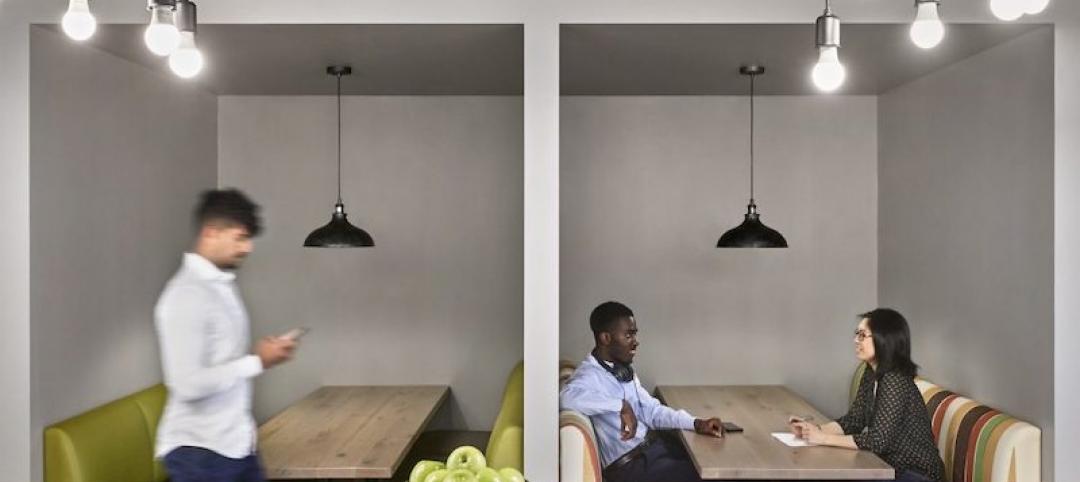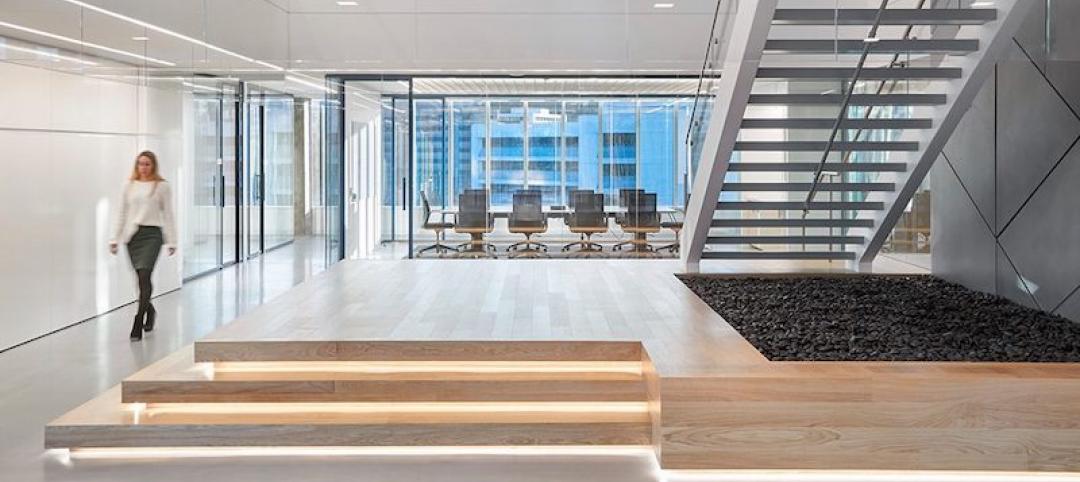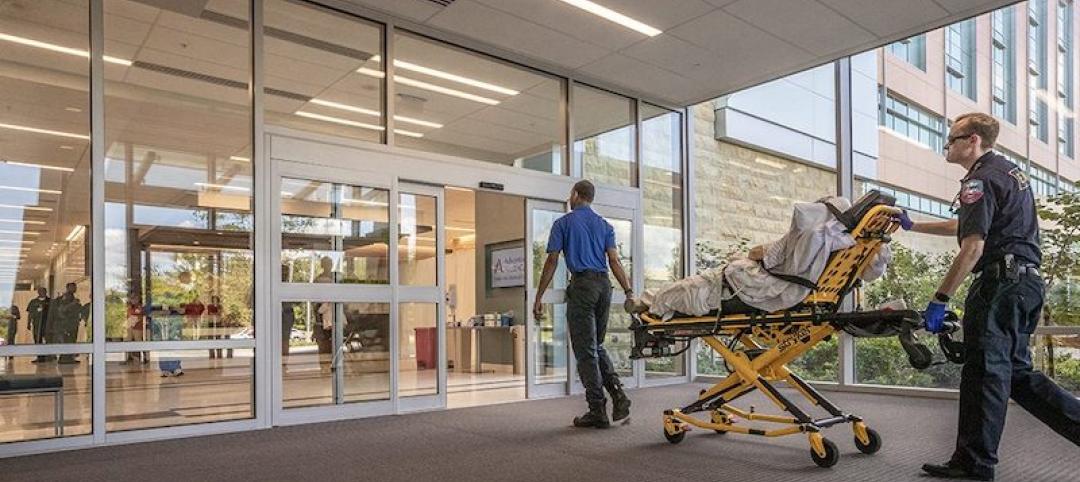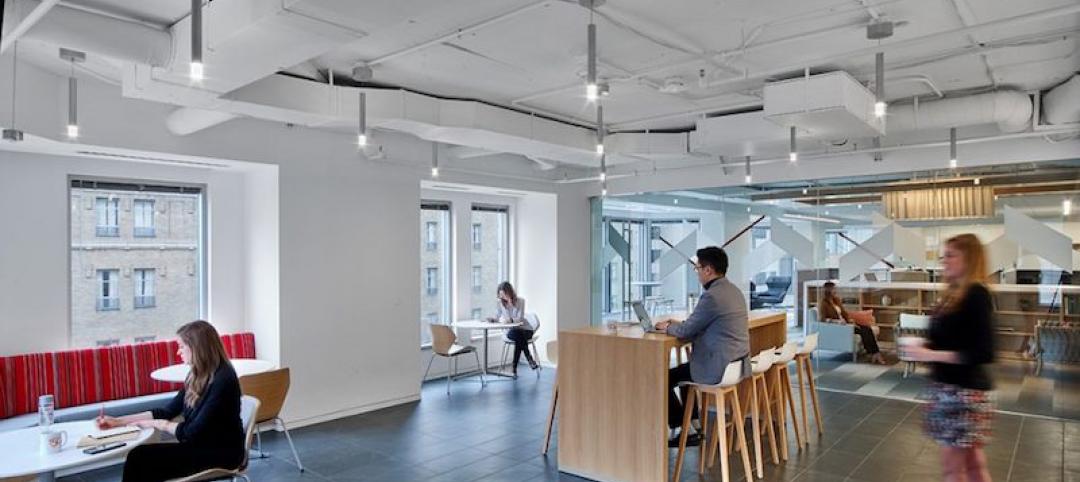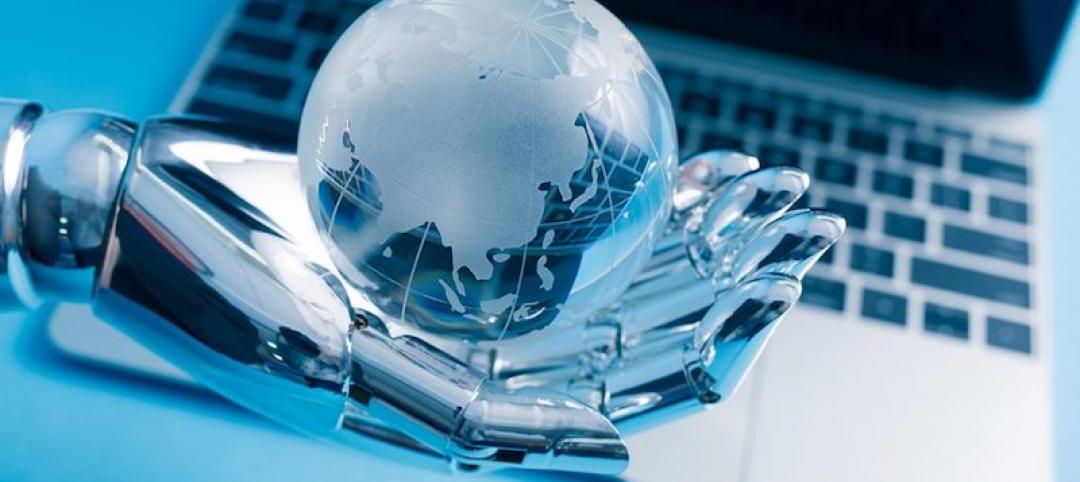Despite spending most of our week working, currently only 9.8% of world employees are covered by a workplace wellness program. We know there is a performance gap in the workplace. Employees want wellness initiatives built into their employee experience, especially when they’re working in spaces that can leave them feeling stiff, stressed, and sick.
Our home environment also works against us with the constant distractions and connectedness to our always-on world. The good news: tech companies are creating innovative solutions to mitigate these problems and offer a more customized environment. Here are some examples:
• Habitat management. In an effort to improve operational effectiveness and efficiency, Edge Technologies designed a smart building in Amsterdam that is responsive and automated. Sensors are installed to bridge sustainable goals and wellness of end-users by allowing them to control their climate. Sensors intuitively measure and optimize the workspace, measuring noise levels, light, and air quality.
By monitoring workers’ data, buildings will know what workers must do on a particular day. They could automatically assign a worker who needs to read a contract a private place to work, or sanitize the desk of an employee who is out on sick leave. In the near future, our buildings will work for us and anticipate our needs to create a more seamless work experience.
‘By monitoring workers’ data, buildings will know what workers must do on a particular day. They could, for instance, automatically sanitize the desk of an employee who is out on sick leave.’
— Kristin Tilley, CallisonRTKL
• Real-time health monitoring. The new Apple Watch includes an electrocardiography (ECG) sensor that can detect disordered heart rhythms and indicate vulnerability to heart attacks and strokes. All data recorded by the ECG is stored in the Apple Health app, a feature that will appeal to the 90% of health tech users happy to share device data with their doctor. The Apple Watch Series 4 also uses an algorithm to analyze movement and impact, allowing it to detect when its wearer has fallen down. If the wearer does not dismiss the watch’s notifications and stays inactive for over a minute, the device automatically notifies emergency services.
If this information was synced with smart building systems, emergency services could be immediately notified of an event and quickly locate a person within the building. As this technology becomes more reliable and efficient, buildings will be able to monitor the health of their occupants and be notified immediately in the event of a health emergency.
• Customized nutrition. According to a study by Hilton, 70% of people are able to pay more attention when healthy food and beverages are offered. In the near future, we can expect wearable technology tracking guest’s daily vitamin levels, dietary and allergy restrictions, and overall well-being to create customized nutritional recommendations so that event and meeting organizers are better equipped when ordering food for guests.
The WELL building standard reports that 80% of adults in the U.S. go through their day at least mildly dehydrated. So, if your wearable detects that you are in need of hydration, a drone or robot will deliver a glass of water to your desk. This level of hyper-personalization will enhance mental acuity so that individuals are more productive, and their energy levels are more balanced throughout the day.
• Collaboration nation. Smart building technology will optimize productivity. We know now that with better access to wireless Internet and cloud systems, solo work functions can be done anywhere. However, spaces to collaborate will not go away in the future. According to the Harvard Business Review, the skills that won’t be automated include communication, content, and teaching.
Our smart buildings will remain a haven for strategic group sessions, and the environment will support these so that the occupants can perform at their highest intellectual capacity.
About the Authors:
Kristin Tilley is a Marketing Research Strategist with CallisonRTKL. Stefana Scinta is a Senior Workplace Strategist with CallisonRTKL.
More from Author
CallisonRTKL | Dec 20, 2021
Digital nomads are influencing design
As our spaces continue to adapt to our future needs, we’ll likely see more collaborative, communal zones where people can relax, shop, and work.
CallisonRTKL | Jun 30, 2020
The great reset and our new work life
As many countries begin to return to the office, it’s a chance to ask ourselves: what do we truly value?
CallisonRTKL | May 4, 2020
How working from home is influencing design
The lessons learned in the next few months can help shape how we work and design in the future. For now, remote work is different – and our new normal.
CallisonRTKL | Feb 26, 2020
Sustainability in a material world
The concepts of embodied carbon, zero waste, and deconstruction and reuse often run on parallel tracks.
CallisonRTKL | Jan 30, 2020
The complex dance of healthcare transitioning
Hospital employees, though excited about technological advancements, are expected to navigate a new workplace and care for their patients at the same time, all while training on new equipment and navigating a new building.
CallisonRTKL | Jan 6, 2020
Retail re-invention: Five questions to ask
Why have some malls survived their long-predicted demise, thriving and bumping with new generations of shoppers, while others have been relegated to the ash heap of deadmalls.com?
CallisonRTKL | Aug 6, 2019
Saving the American mall in 5 steps
CallisonRTKL Vice President Marc Fairbrother explains how struggling American malls can turn it all around.
CallisonRTKL | Apr 5, 2019
2019 trends in the workplace
From retention and career advancement to the ethics of inclusion and diversity, these five trends will play a major role this year in design, strategic planning and workplace development.
CallisonRTKL | Jan 28, 2019
9 tech trends to track in 2019
Innovations in voice recognition, cognitive neuroscience, and biometrics are among the trending tech topics for 2019, according to CallisonRTKL's Kristin Tilley.
CallisonRTKL | Dec 3, 2018
Biotrack your shop
Sabrina Hilfer, a specialty retail designer, talks about the integration of biometrics in the retailscape.



